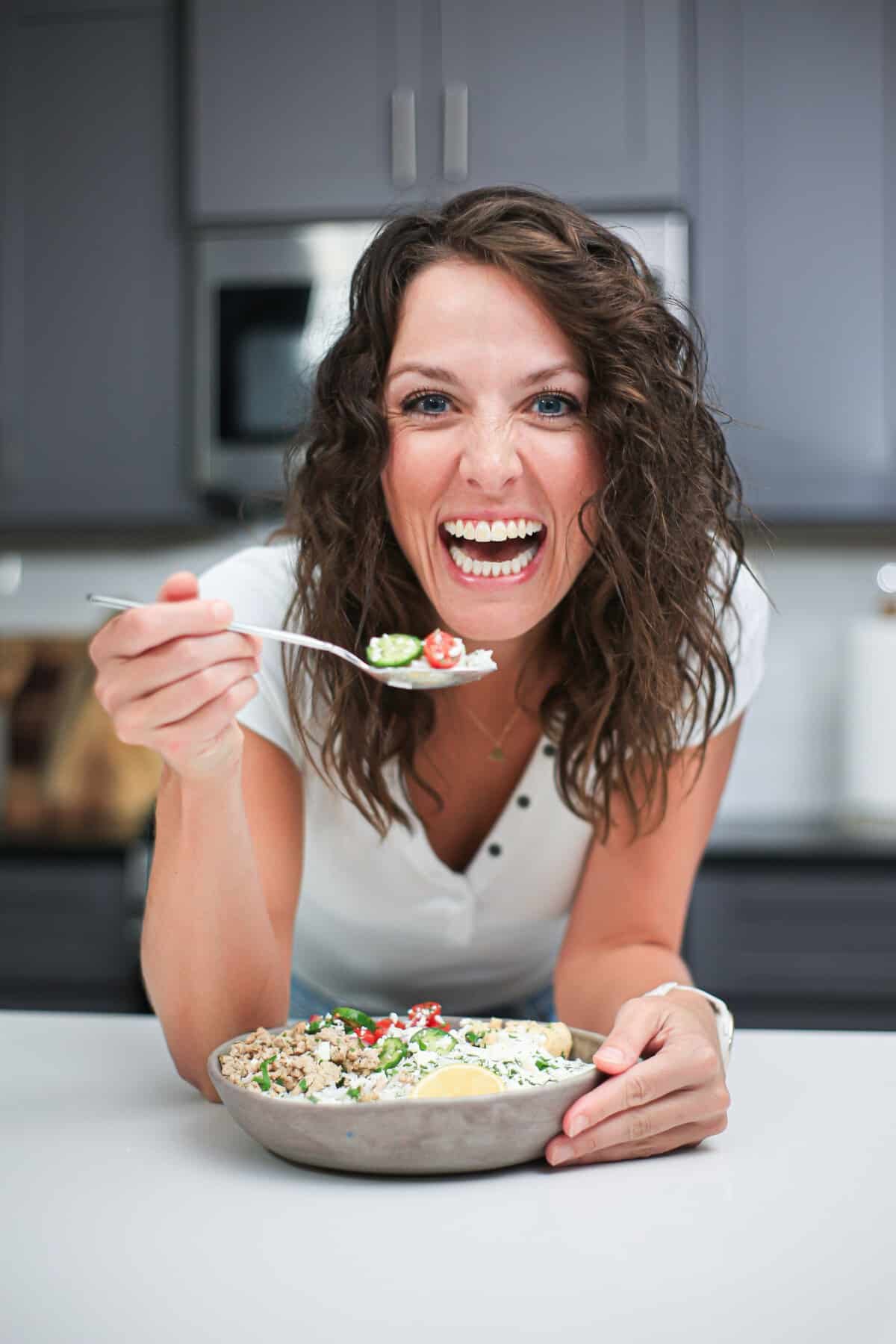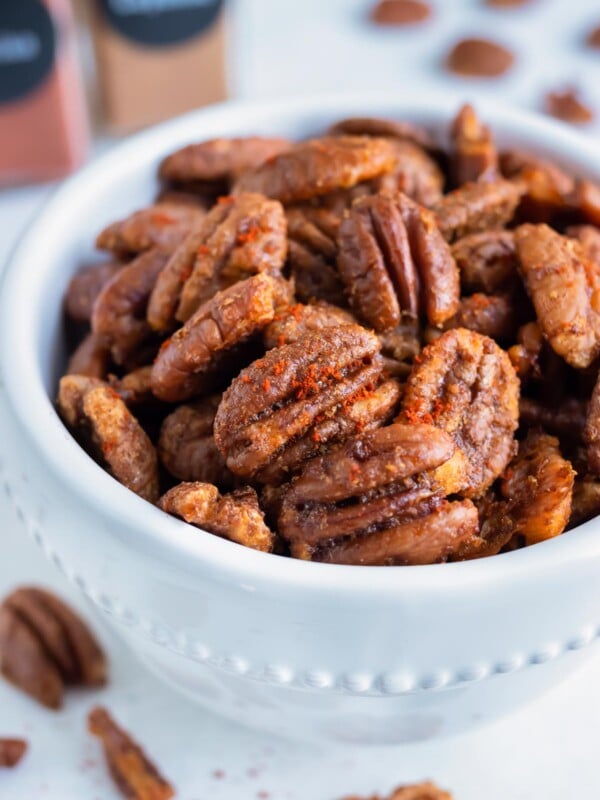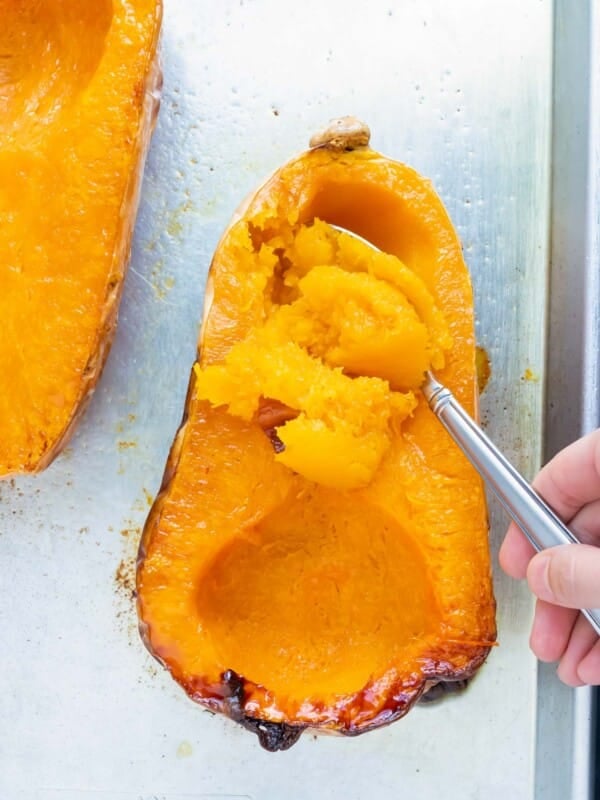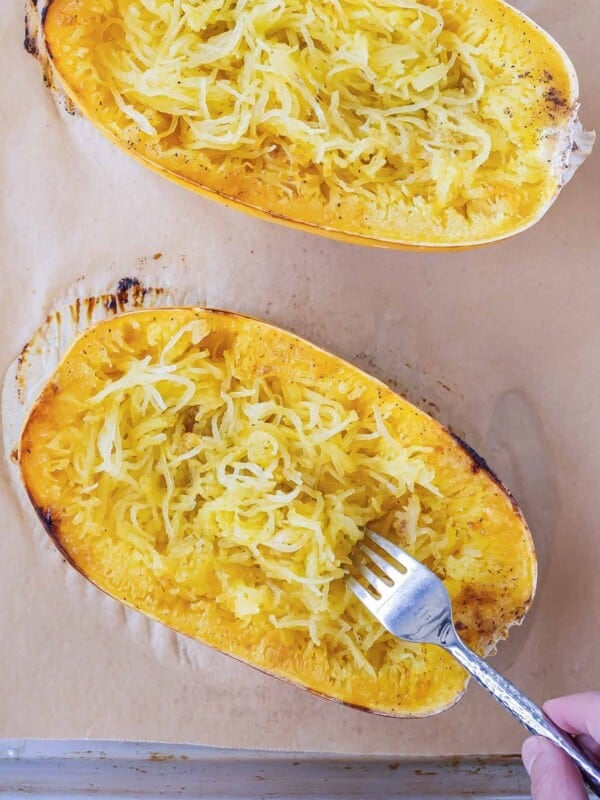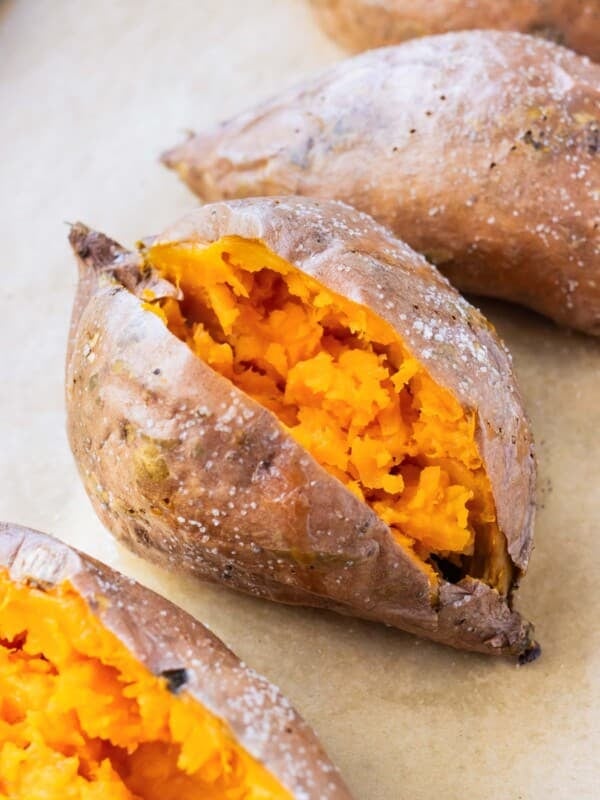Is couscous healthy? To answer this question, you have to start with what couscous is. Surprisingly to many, it’s a type of pasta and not a whole grain. Nevertheless, couscous can still provide many essential nutrients in your diet. Because it’s so easy to prepare, you can make it tonight and use it in some of the recipes you’ll find below!
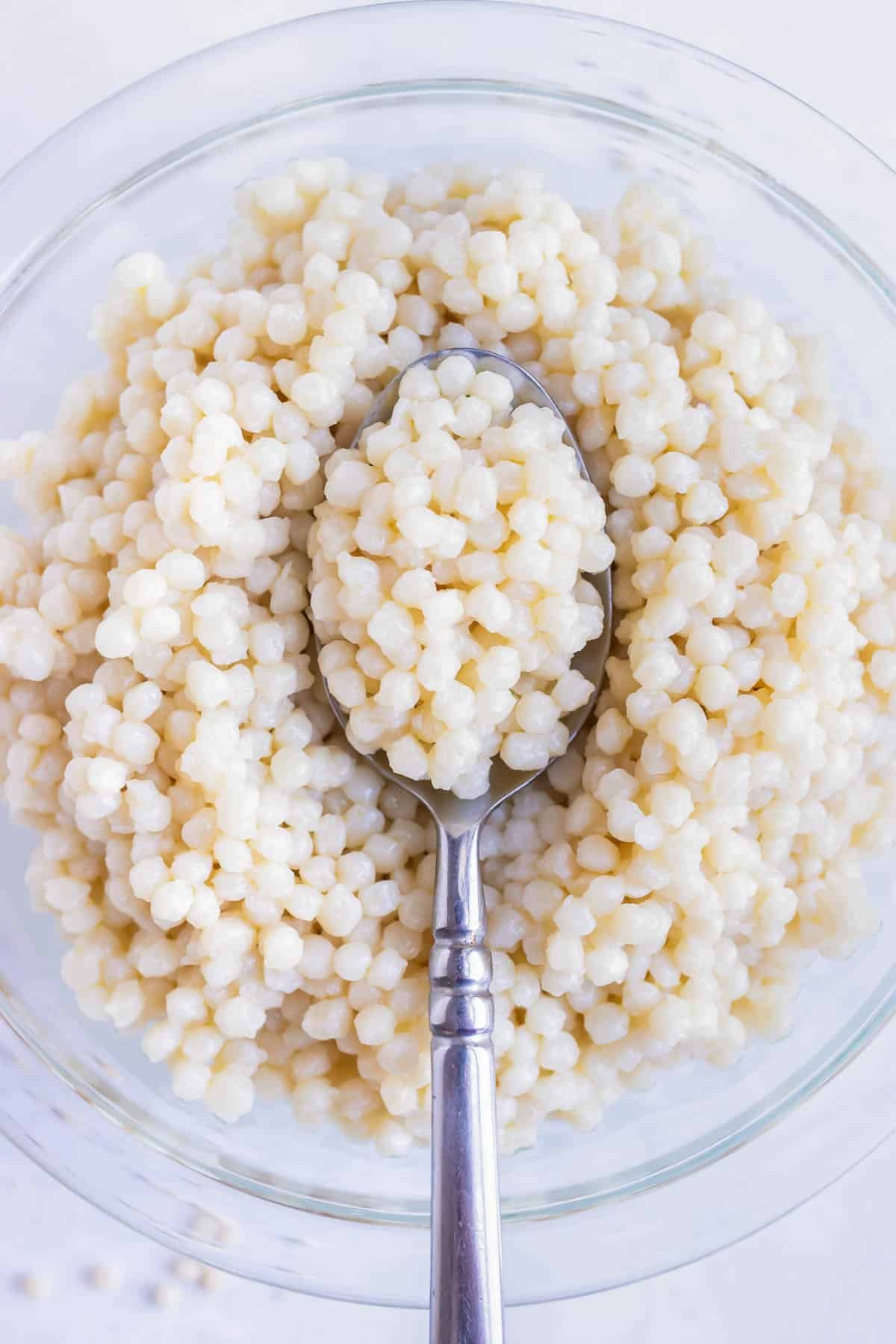
What is couscous?
Some people mistake couscous for a whole grain, but in fact, it’s a type of pasta that is made from semolina flour. This flour is also known as durum wheat semolina flour, which has a higher protein content than all-purpose flour. It’s more of a yellow color compared to white or brown flours.
Couscous was originally hand-made by rolling the the pasta dough into tiny, irregular pieces, kind of like the size of peppercorns. It is now made by a machine in factories. You can usually find it in the pasta aisle at your nearest grocery store.
Couscous Nutrition
One cup of couscous generally has the following nutritional profile:
| Carbohydrates | 37g |
| Protein | 6g |
| Fat | 0.3g |
| Fiber | 2.2g |
| Total Calories | 176 |
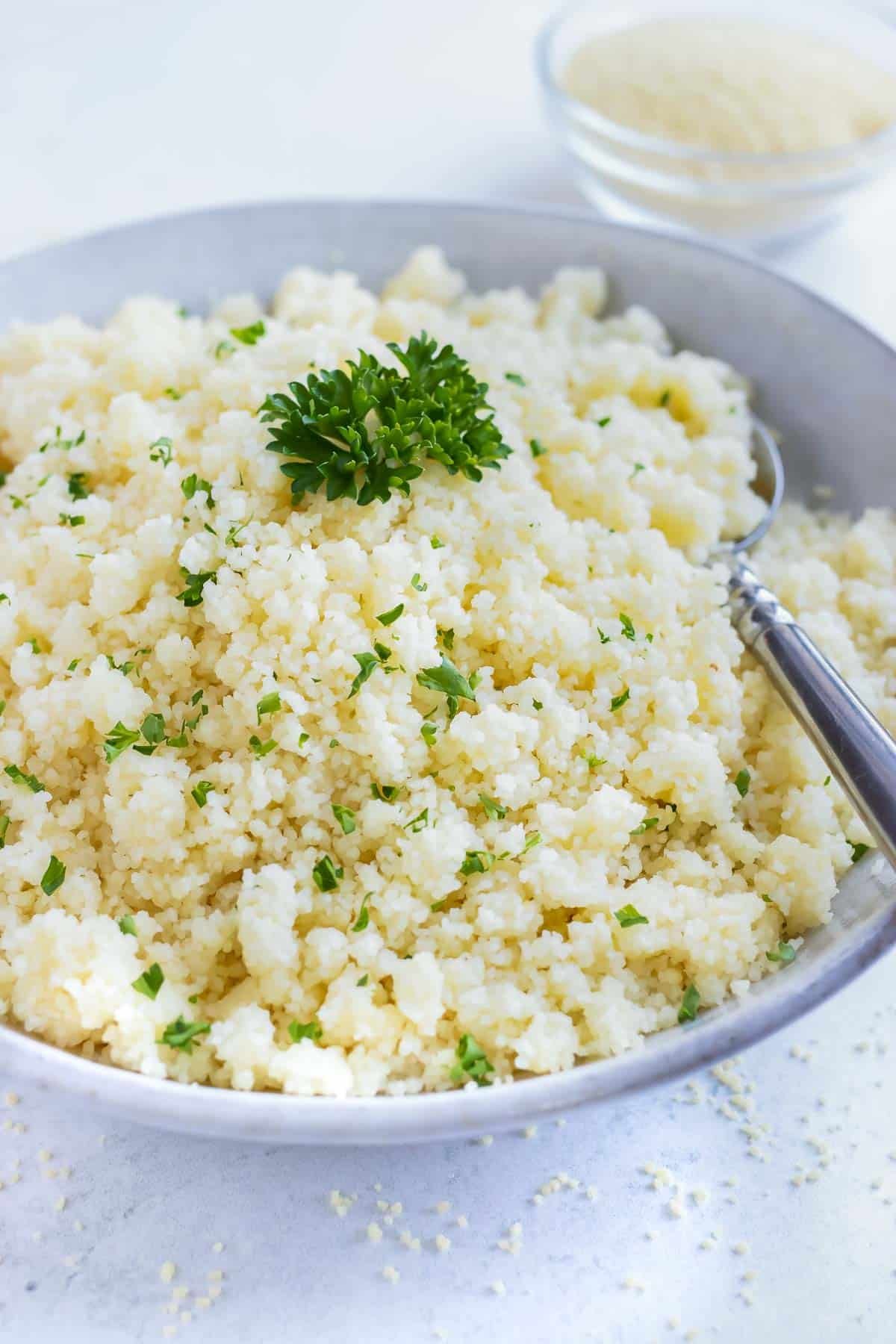
What does couscous taste like?
Couscous has a neutral flavor which makes it very easy to combine with savory, sweet, spicy, and tangy flavors. You can use water as a base to cook couscous, but if you want to add more depth, you can use broth or stock instead.
What are the health benefits of couscous?
Now that we know the nutritional value of couscous, let’s look into the heath benefits of eating it.
Lean Protein
Couscous is a simple addition of protein in your diet. However, couscous is not a complete protein, so you do need to pair it with a food that can round it out. This is easy because you don’t usually eat couscous on its own.
Add-ins to your couscous can include carrots, mushrooms, avocado, wheat germ, chestnut, seeds like pumpkin, chia, and hedge mustard, as well as yellow or Dijon mustard. You can also pair couscous with dairy like sour cream and yogurt. Other creamy condiments that contain protein, like mayonnaise, are great choices too.
Fiber
Couscous is a good source of fiber, giving you many reasons to enjoy it. One, fiber is beneficial to your digestive health by preventing constipation. Additionally, it can lower your blood sugar levels and your cholesterol which reduces the risk of heart disease. Incorporating more fiber in your diet can also keep you feeling fuller longer, which can help with weight loss.
Selenium
Couscous has a great amount of selenium in it. Selenium is a powerful antioxidant that can help with protecting against specific cancers. By reducing inflammation and plaque build up, selenium also increases heart health and boosts your immune system.
Vegan/Vegetarian
If you eat according to a meat-free or plant-based diet, then couscous is definitely up your alley. Because couscous is packed with nutrients like B vitamins, calcium, magnesium, iron, zinc, and vitamin E, it’s a great way to make sure you aren’t missing out on many of the benefits of meat and dairy products.
Easy to Prepare
It’s simple to learn how to cook couscous, and it takes less than 20 minutes, which isn’t long compared to cooking white rice or beans. All you have to do is boil and fluff.
You can boost it with all kinds of flavors and additions. It’s an easy way to fill out a meal, whether you add it to salads or make it a side to a main meat or vegetable dish.
Different Types of Couscous
There isn’t just one type of couscous, which makes it that much more versatile. Let’s dive into the different types of couscous. One of these will surely become a staple in your pantry.
Moroccan Couscous
Moroccan couscous is the smallest sized and most popular and traditional couscous. It is often referred to as instant couscous. In the United States, you can generally find this regular couscous packaged in a box where it’s been pre-steamed and dried, making the cook time no longer than 5 minutes.
This couscous also can be packaged with flavor packets of dry ingredients—like Parmesan and garlic—to add to the couscous water. The instructions will often ask you to add olive oil to the water to give it an extra kick of flavor.
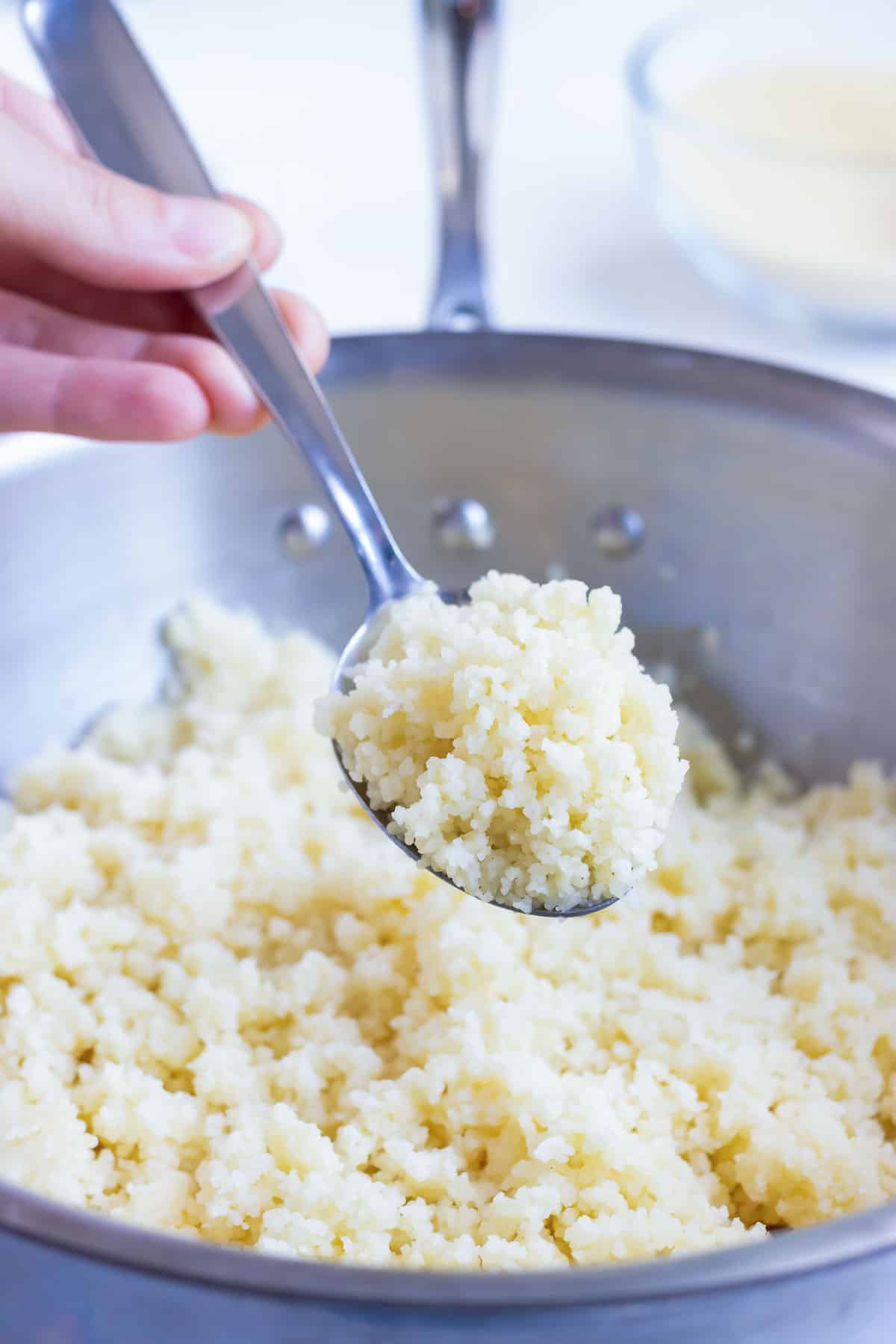
Pearl Couscous
Pearl couscous is also known as Israeli couscous. It is larger and rounder, giving it a chewier texture and a nuttier flavor. It works well with herbs and in soups and salads. As an alternative to regular pasta or rice, it also pairs nicely with meats and vegetables.
Lebanese Couscous
This couscous is even larger than pearl couscous. It’s about the size of a green pea and is usually paired with beef or lamb. This couscous is most popular in the Middle East.
Whole Wheat Couscous
This form of couscous is considered more nutritious than other types simply because whole wheat durum flour is used to make it, adding additional protein, fiber, and vitamins. You can find whole wheat versions of both pearl and Moroccan couscous.
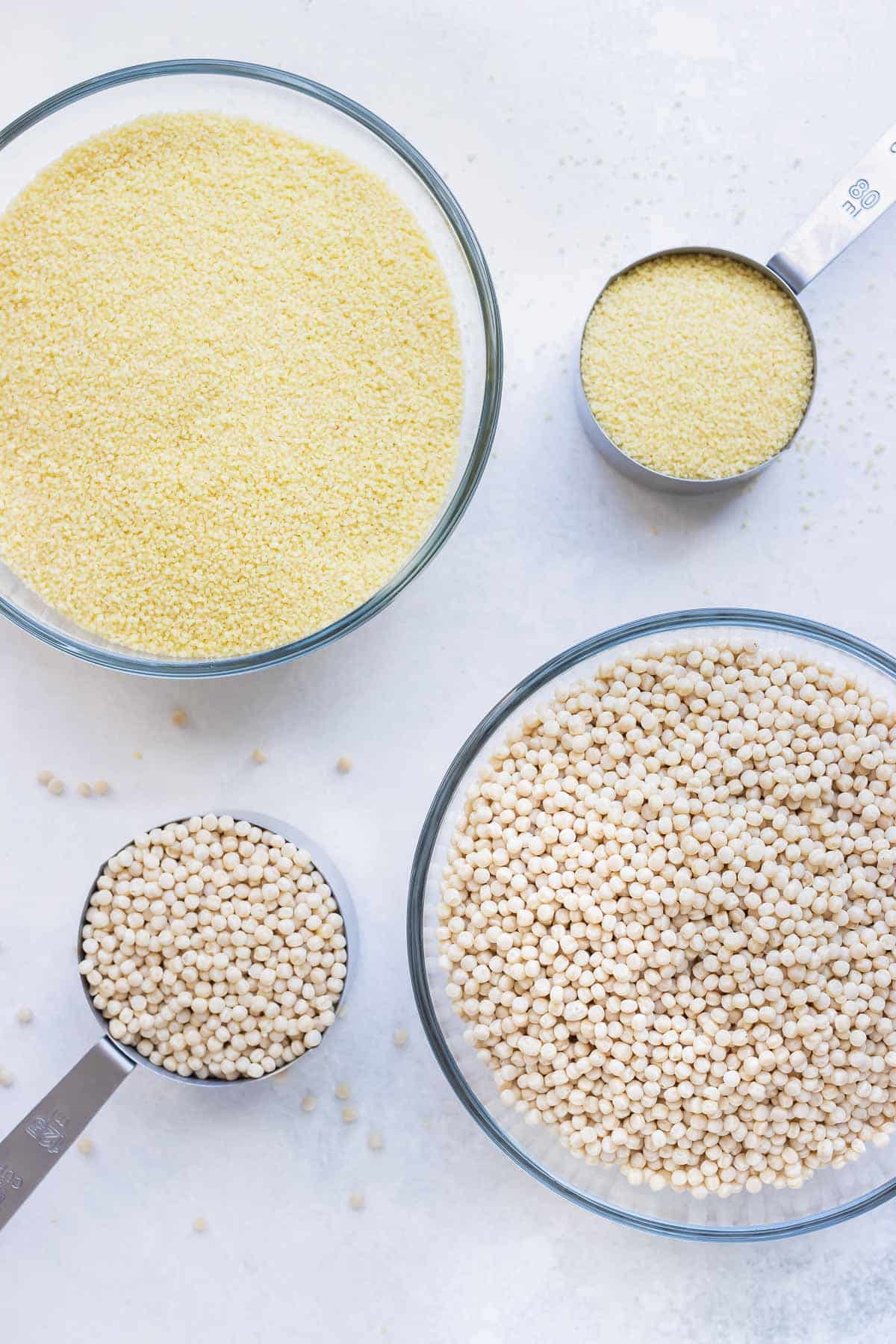
Couscous FAQ
It’s generally healthy to include as part of a well-balanced diet.
Usually 1 ¼ cup water or broth per 1 cup couscous. Check your package instructions.
It’s a great source of fiber and can lower blood sugar and cholesterol.
No. Since it’s a pasta and not whole grain, rinsing it is not required or recommended.
Couscous contains gluten and is high on the glycemic index. If you are gluten-free, couscous is not a safe choice.
Couscous contains more protein and fiber, making it a healthier option than rice.
Do not cook it on the stovetop directly. Once boiling, simply move it away from the high heat, or add boiling water to couscous in a bowl on your countertop and let it steam.
Quinoa is generally better for you because it’s a complete protein, does not contain gluten (for gluten-free people), and has double the fiber.
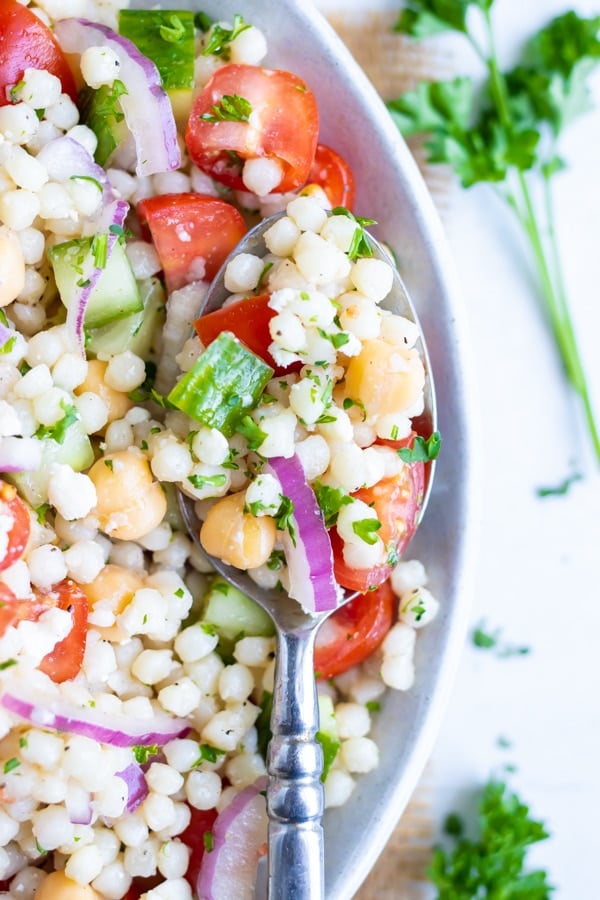
Couscous Recipes
Learn How to Cook Couscous with this recipe. Make this fresh Mediterranean Couscous Salad with Tomatoes and chickpeas and red onions. Attempt this Lamb Kofta and add couscous as a generous side dish. Check out this post answering the big question of if couscous is gluten-free.

